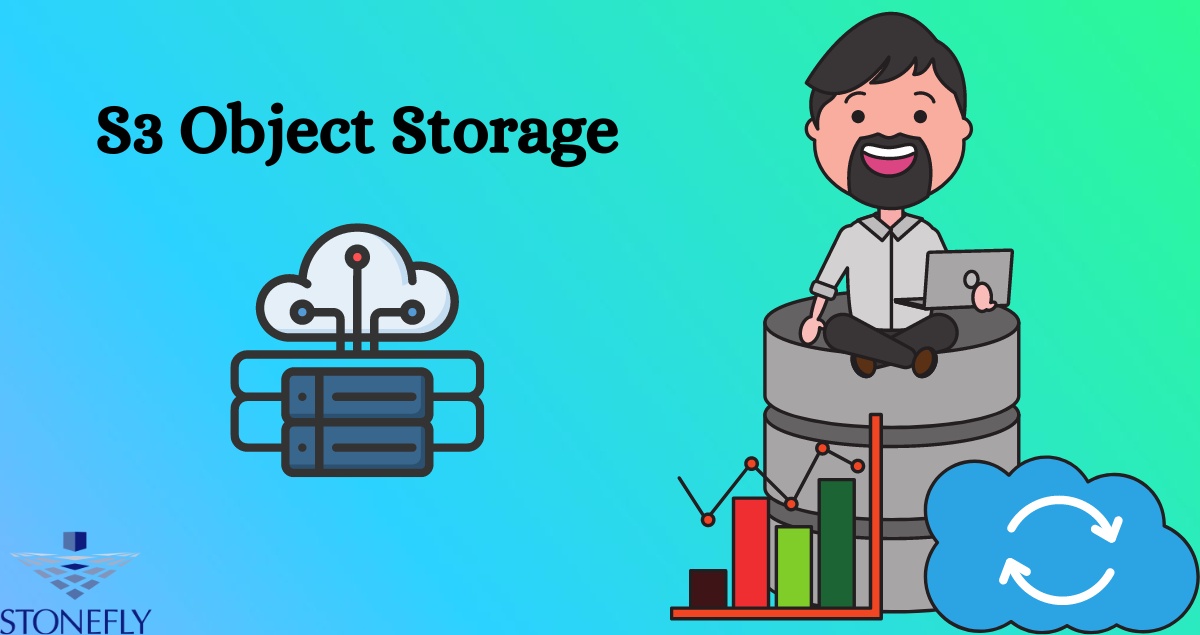S3 Object Storage: A Comprehensive Guide
S3 Object Storage is a cloud-based storage Service. It provides developers and businesses with secure, durable, highly scalable, and cost-effective storage solutions for their data. S3 stands for Simple Storage Service and it offers a simple web interface to store and retrieve any amount of data from anywhere on the web. In this comprehensive guide, we will explore the features, benefits, and use cases of S3 Object Storage.
What is S3 Object Storage?
S3 Object Storage is a highly available, scalable, and durable storage service. It is designed to store and retrieve any amount of data from anywhere on the web. With its simple interface and pay-as-you-go pricing model, S3 has become a popular choice for developers and businesses to store their Data in the Cloud. S3 also offers high performance, low latency, and industry-leading security features, making it suitable for a wide range of use cases.
How Does It Work?
Buckets and Objects
In S3 Object Storage, data is stored in buckets and objects. A bucket is a container that holds the objects, similar to a folder in a file system. Each object can be up to 5 TB in size and contains both data and metadata. The metadata includes information such as the key (name) of the object, its type, date created, and storage class. Objects can be accessed through a unique URL, making it easy to share and retrieve data.
Regions and Availability Zones
S3 Object Storage is available in multiple regions around the world. Each region consists of multiple Availability Zones, which are isolated data centers within the same geographic location. This allows for high availability and durability of data stored in S3 as it is automatically replicated across multiple Availability Zones.
Storage Classes
S3 Object Storage offers several storage classes to suit different use cases. These include Standard, Standard-Infrequent Access (Standard-IA), One Zone-Infrequent Access (One Zone-IA), and Glacier. Each storage class has different pricing, availability, durability, and retrieval options, allowing users to choose the most suitable option for their data.
Benefits of S3 Object Storage
Scalability
S3 Object Storage is highly scalable, meaning it can handle large amounts of data without any performance issues. It also allows users to easily scale up or down their storage needs as their data grows.
Durability
With S3 Object Storage, data is automatically replicated across multiple Availability Zones, providing 99.999999999% durability. This ensures that even in the event of a disaster, the data will still be available and accessible.
Cost-Effectiveness
S3 Object Storage offers a pay-as-you-go pricing model, which means users only pay for the storage they use. It also has no minimum fees or long-term commitments, making it a cost-effective option for storing data.
Security
S3 Object Storage offers industry-leading security features to protect stored data from unauthorized access. These include encryption at rest and in transit, access control through bucket policies and access control lists, and multi-factor authentication.
Use Cases for S3 Object Storage
Backup and Archiving
S3 Object Storage is a popular choice for backup and archiving as it offers highly durable and cost-effective storage solutions. It also allows users to easily retrieve data when needed.
Web Hosting
With its ability to store any amount of data, S3 Object Storage is a great option for hosting static websites or web applications. It also offers high availability and low latency, providing a seamless user experience.
Big Data Analytics
S3 Object Storage is often used for storing and processing large amounts of data in big data analytics projects. Its scalability and durability make it ideal for handling large datasets.
Content Distribution
S3 Object Storage can also be used for content distribution, such as hosting media files or delivering software updates. Its high performance and global reach make it a reliable option for distributing content to users around the world.
Collaboration and File Sharing
S3 Object Storage can serve as a central storage location for collaboration and file sharing within teams or organizations. Its security features also ensure that only authorized users have access to the shared data.
Mobile and IoT Applications
S3 Object Storage can be integrated into mobile and Internet of Things (IoT) applications for storing data such as images, videos, or sensor readings. Its low latency and global availability make it a suitable option for these types of applications.
Data Lake Storage
S3 Object Storage is often used as a data lake storage solution, where large amounts of structured and unstructured data can be stored and processed. Its scalability and durability make it an ideal choice for building data lakes.
Hybrid Cloud Storage
S3 Object Storage also offers an option for hybrid cloud storage, where data can be seamlessly transferred between on-premises systems and the cloud. This allows businesses to take advantage of the scalability and cost-effectiveness of the cloud while still maintaining control over their data.
Long-Term Storage
S3 Object Storage is a suitable option for long-term storage of data that needs to be accessed infrequently. Its lower cost storage classes, such as Glacier, make it an economical choice for storing data for extended periods.
Conclusion
In summary, S3 Object Storage is a highly versatile and reliable storage solution that offers various benefits and use cases for businesses and developers. With its scalable, durable, cost-effective, and secure features, it has become a go-to option for storing and managing data in the cloud. As technology continues to evolve, S3 Object Storage is expected to remain an essential component of many organizations' data storage strategies. To learn more about S3 Object Storage and how it can benefit your business or project, check out the official S3 documentation. So, this is all about S3 Object Storage and its various capabilities. We hope you found this content informative and engaging. Thanks for reading!
FAQs
Q: Can I use S3 Object Storage for hosting dynamic websites?
A: Yes, you can. However, it is important to note that S3 is primarily designed for storing and retrieving objects and may not be suitable for hosting complex dynamic websites.
Q: Are there any limitations on the size or type of data that can be stored in S3 Object Storage?
A: S3 has no limit on the size or type of data that can be stored, as long as it falls within the allowed storage limits and is not prohibited by S3 policies. However, certain file types may require additional configuration for proper storage and retrieval. Consult the S3 documentation for more information.
Q: Can I access my data in S3 Object Storage from anywhere in the world?
A: Yes, S3 offers global availability and low latency, allowing you to access your data from anywhere in the world. However, data transfer fees may apply for accessing data from different regions. For more information on pricing, refer to the S3 documentation.
Q: How does S3 Object Storage differ from traditional file storage systems?
A: Unlike traditional file storage systems, S3 Object Storage does not have a hierarchical folder structure. Instead, it stores data as objects with unique identifiers and metadata, making it easier to store and retrieve large quantities of data. Additionally, S3 offers higher scalability and durability compared to traditional file storage systems.
Q: Can I use S3 Object Storage for both hot and cold data storage?
A: Yes, S3 offers multiple storage classes to suit different data access patterns and cost requirements. Users can choose between hot storage for frequently accessed data or cold storage for infrequently accessed data. This flexibility makes it a suitable option for a variety of use cases.


No comments yet